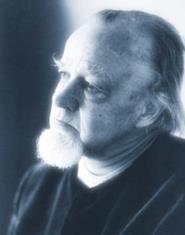
In the last chapter, Schaeffer pointed out how the Middle Ages saw a split of the disciplines of theology and philosophy. In the Renaissance, the fruit of that shift continued in scholasticism in the south of Europe. The philosophers idolized the past, but not the early Church. They, instead, looked back to the pagan classics. In the pagan classics, they found the fuel for the man-centered fire that had been burning under the surface for centuries, couched in the language of the Roman church.
“Oh supreme liberality of the Father God! Oh most high and marvelous joy of the human creature, to whom has been granted to have what it chooses, to be what it decides!” – Pico Della Mirandola
With the increasing rift between theology and philosophy, the scholastics looked for even more subtler questions to pose to display their intellectual prowess.
An effect of the move toward more Aristotelian thought was a focus on the reality of nature. According to Schaeffer, Giotto is an example of an artist who gave nature a more proper place. His people were real people. This is a good thing in some sense.
“God made the world, nature is indeed important – and nature was now being portrayed more like it actually is.”
Dante’s compartmentalization between sensual love and ideal love. “The wife was a dray horse; the idealized woman, a disembodied phantom.”
Although this past age did include the early Christian church, it became increasingly clear that the sort of human autonomy that many of the Renaissance humanists had in mind referred exclusively to the non-Christian Greco-Roman world. Thus, Renaissance humanism steadily evolved toward modern humanism—a value system rooted in the belief that man is his own measure, that man is autonomous, totally independent.
We see a type of modern relativism in just about every area of our culture. It’s in every Bible study where the statement “What this means to me…” is entertained. Man is the starting point rather than the intent of the author.
It was the humanists of that time who, under the enthusiasm for the classics, spoke of what had immediately preceded them as a “Dark Age” and talked of a “rebirth” in their own era.
Schaeffer, F. A. (1982). The complete works of Francis A. Schaeffer: a Christian worldview (Vol. 5, p. 109). Westchester, IL: Crossway Books.
But for the men of the Renaissance the new view of perspective was also something more: it placed man in the center of this space, and space became subordinated to mathematical principles spun out of the mind of man.
Schaeffer, F. A. (1982). The complete works of Francis A. Schaeffer: a Christian worldview (Vol. 5, p. 110). Westchester, IL: Crossway Books.
Schaeffer makes the point that portraits became an accepted art form during this time, further demonstrating the man-centered ideology that was gaining exponential speed.
However, not all art was man-centered. He looks to the Adoration of the Lamb by Jan Van Eck. Van Eck understood the biblical doctrine of Christ as substitute and painted a very real expression of His redemption of the physical world.
It was good that nature was given a proper place. And there could have continued an emphasis on real people in a real world which God had made—with the particulars, the individual things, important because God made the whole world.
Schaeffer, F. A. (1982). The complete works of Francis A. Schaeffer: a Christian worldview (Vol. 5, p. 113). Westchester, IL: Crossway Books.
Man made himself increasingly independent and autonomous, and with this came an increasing loss of anything which gave meaning, either to the individual things in the world or to man. With this we begin to see the dilemma of humanism which is still with us today.
Schaeffer, F. A. (1982). The complete works of Francis A. Schaeffer: a Christian worldview (Vol. 5, p. 113). Westchester, IL: Crossway Books.
In contrast to the meaning behind the particulars, we see in Van Eck, Schaeffer points to the Red Virgin by Fouquet as an example of art without meaning, particulars stripped of their unifying principle. The Red Virgin was set up in the form of a portrait of the Virgin Mary, but the model for the painting was the King’s mistress with her breast exposed. It is an expression of Mary with all of the holiness attributed to her at the time removed, but also all meaning was being destroyed. “Virgin” no longer means virgin in this painting by Fouquet.
In my opinion, this next quote is the most important statement in the chapter.
[Leonardo] was one of the unique geniuses of history, and in his brilliance he perceived that beginning humanistically with mathematics one only had particulars. He understood that man beginning from himself would never be able to come to meaning on the basis of mathematics. And he knew that having only individual things, particulars, one never could come to universals or meaning and thus one only ends with mechanics. In this, he saw ahead to where our generation has come: everything, including man, is the machine.
Schaeffer, F. A. (1982). The complete works of Francis A. Schaeffer: a Christian worldview (Vol. 5, p. 115). Westchester, IL: Crossway Books.
Leonardo, died in despondency because could not reconcile meaning in the particulars. Humanism had already begun to show that pessimism is its natural conclusion.
Leave a Reply